This review was written by my friend and site contributor Tim Gallant, who visited Royal St. George’s this past February. Enjoy!
Royal St George’s, or Sandwich as it is commonly referred to, is one of the very best links golf courses in the world. While you may hear pros complain about the course due to its humps and bumps that are likely to throw a drive or approach offline on occasion, don’t listen to them. This is arguably the best blend of interest, uniqueness and variety all rolled into a championship test!
When visitors arrive, the first thing they will see is a quaint clubhouse that oozes quintessential British aristocracy. Walking through the main door with jacket and tie, players can take their shoes to the understated locker-room, and then are free to peruse the walls that feature scorecards from prominent events and notable rounds held at the course.
Having a coffee in the grand smoking room is idyllic. Set in tables of four, you will never find a golfer by his or her lonesome. In fact, even as a two, the Secretary came to have a chat with us, and what a lovely fellow he is, quick to share the history of the paintings that adorn the walls in the Dining Room. Overlooking a small courtyard garden, with bookshelves lining two of the walls, it is easy to imagine giving up the idea of a round if the wind is howling, and the fire is stoked nearby!
But we were there to play, and play we did! So now onto the course!
Hole 1: From the go, players will face a stern test at the first; with mild (mild by Sandwich terms!) undulations in the landing area, and two bunkers centre-fairway awaiting drives that run just a little bit too far – it is a fine opening hole. The green sets the tone for the round with spectacular movement and a front-to-back tilt that must be devilish to hold in the heat of the summer.
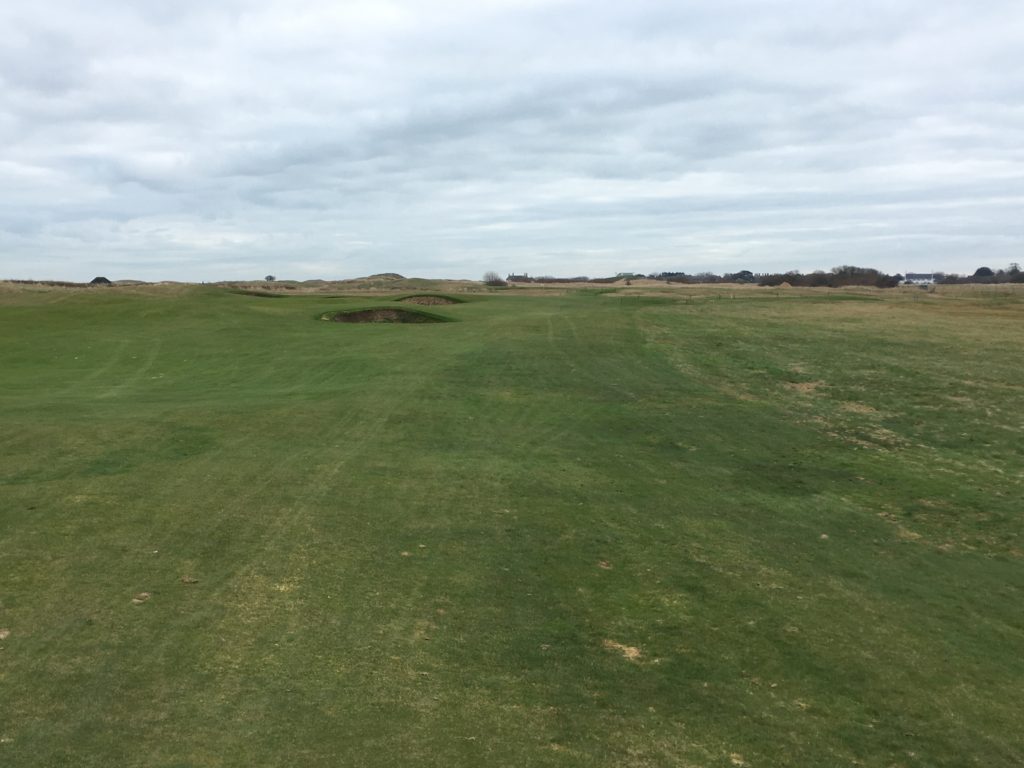

Hole 2: A dogleg left, with two bunkers guarding the corner, my playing partner was quick to mention that the best of the course starts with the approach into 2 – and he wasn’t wrong. The green is magnificent, settled on higher ground after a wild swale protects the front of the green, this back-to-front pitched putting surface with fall-offs (and no bunkers!) on each side is a tricky task to hold, even with a short iron.
Hole 3: The first of the par-3s, and a good hole that is placed on the east side of a larger dune – the two tiered green is generous and can accept the long-iron shot that is demanded by the distance.
Hole 4: The hole we have been waiting for – and it doesn’t disappoint. A fearsome par-4 with a blind drive over the second biggest bunker in England – it is perfection. But alas, many down Kent way think the hole has lost some of its charm since they took the sleeper-ties out of the bunker (health and safety no doubt), but I loved it all the same. From the right side of the fairway, a splendid view of a diabolical green is afforded. I reckon there are only 4 or 5 possible pins on the green. With a great big false front, a wing on the left of the green, and a fall-away to the right, it is possibly the best green on a course.
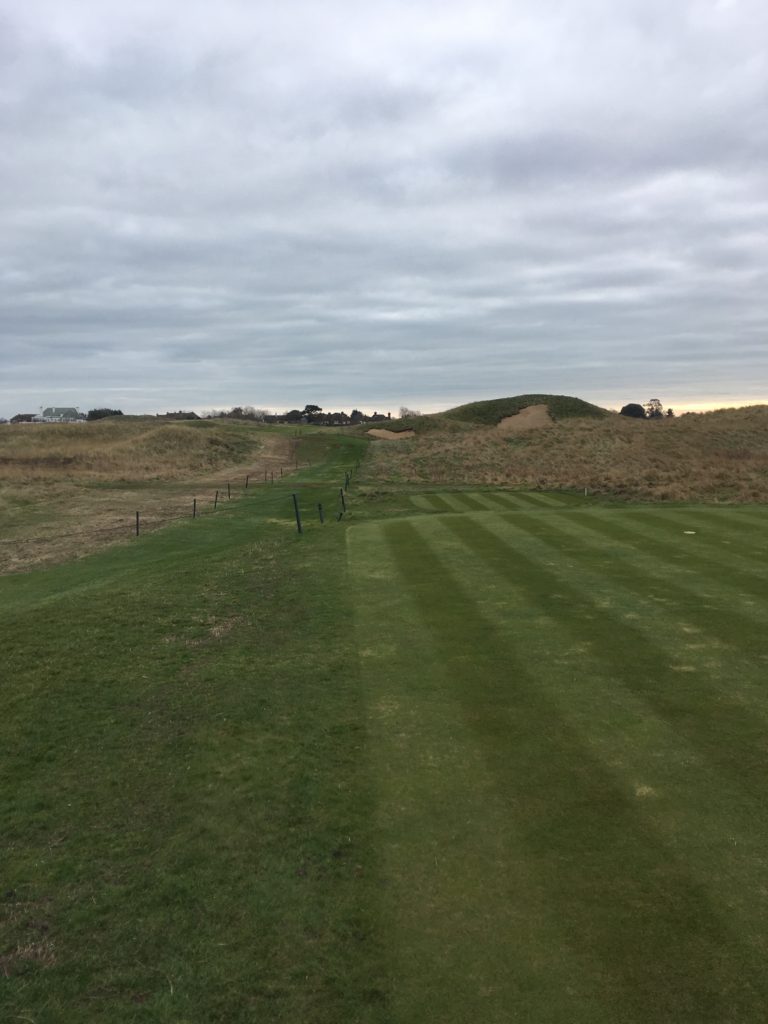
Hole 5: No time to catch your breath, many say the 5th is a better hole than the 4th, and who am I to argue? A long par-4, dogleg left, the drive is the critical shot. Players aim to a 15-yard wide box in the fairway that will open up a small peak at the green from between two great big dunes, providing the ideal line in. Too far left, and you’re likely to find one of the treacherous pot bunkers that guards the corner. Too far right, and you’ll be playing blind over the dunes, and your approach will be much longer. The green has no bunkers, but has a gathering area off the left. Quite simply: perfect.
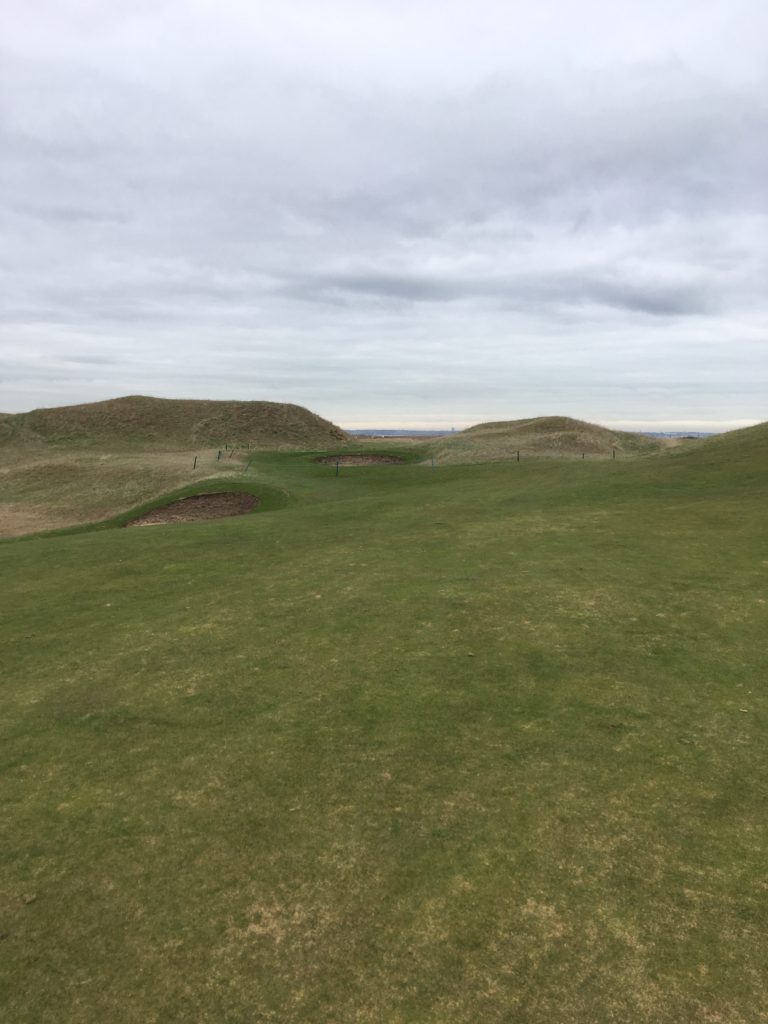
Hole 6: The hole that used to play over Hades, the 6th is a lovely little par-3. Set in a little basin between the dunes, there are 4 deep bunkers to catch out the bold or timid. There is the smallest of swales in the middle of the green.
Hole 8: After the par-5 7th, players walk to the 8th tee hoping to hit the fairway at all costs. A par-4 that plays as a dogleg right, the fairway runs out at around 270 yards, and players must then approach a green that sits in a natural bowl surrounded by fescue and bunkers. This was one of my favourite holes on the course, and has been known to be the demise for players that miss the green. A back pin is likely to spell disaster for the aggressive, because not two feet off the fringe is some of the thickest rough that a player will see on the course. Better to aim for the middle of the green and play for the 4!

Hole 9: A fantastic par-4, players challenge the bunkers on the right, which opens up a better view of the frightening green. A big pot bunker digs into the green on the left to make life even more challenging for those approaching from the same side. And all along the right side is a great big fall-off to a tightly mown collection area some 15 feet below the green. Talk about challenging!
Hole 10: A humpy, bumpy fairway leads players up the hill on this short-ish par 4 to one of the best skyline greens in the UK. This is one of the highest points of the course, and the green is very exposed, making knockdowns and punch-shots the preferred method for approaching.
Hole 11: The 3rd of the threes, the 11th is long, and depending on the pin placement, can be even longer. The green has wonderful internal contours, and although you could describe it as a two tiered green, it actually fits so well within its surroundings, and has so many other interesting contours on its surface, that it seems so original and fresh – a joy to putt.
Hole 12: Possibly my favourite hole on the course, the 12th is a short-ish par-4 that has some of the best movements in a fairway that I have seen on a links course. If players successfully find the short grass, they must then fly up and over scary cross-bunkers that protect the front portion of the green. No running shots here – and it is this variety that sets Sandwich apart. All the shots are required.
Hole 13: A spine runs through the green at this long par-4, and again demonstrates how, when done properly, green contours and pin placement can dictate strategy off the tee.
Hole 14: The Suez Canal! What a golf hole, and where several Open Championship dreams have come to a crushing halt (we’re looking at you DJ!). Players hit to a semi-blind landing zone, with OB down the entire length of the hole. The famous canal intersects the fairway and can be in-play for longer players off the tee, or if the wind is behind, so club selection is critical. The real genius of this hole however, is the bunkering. Two intimidating principal’s nose bunkers roughly 80 yards short of the green are set to defend all shots that don’t challenge the OB to the right. There are then bunkers on the left side of the green to serve the same purpose. To take these bunkers out of play, players must challenge the OB with their drive, and / or second shot. Those who play too cautiously will pay the penalty with a daunting approach shot up and over bunkers to a green that has OB all down the right. That said, with a puff of wind and a left-to-right shot, the out of bounds lurks like a wolf in the night – waiting to feast on the bold.
Hole 16: The last of the par-3s, and it is very fine indeed. A mid-iron will do the trick, but be careful. The green runs from back-to-front, and has a right-side fall-off into a big, bad bunker. There are two spectacle-esq bunkers that hide the left side of the green and its trouble, making a small target seem even smaller.
Hole 17: Away we hit, down to a fairway set below the tee. From there, players will approach a green set on a plateau, with a big swale at the front. The green is of generous proportion though, and those playing steady golf might see a birdie or two here.
Hole 18: Our home hole and the end of our rollercoaster round. The 18th is a championship worthy par-4 ending that demands an accurate drive and excellent second. Some will point to the 1st and 18th, which play across flatter terrain as being the weakness of Sandwich, but I don’t agree. Like the rest of the course, they offer variety and are examples of the fine ways to start and end a course.
Overall, I thoroughly enjoyed my round at Sandwich. We had a late lunch in the snack room (alas the Dining Room was closed) and enjoyed a glass of wine. As a course, it has some spectacular golf holes, and is one of the best links courses in England, and in the world. Bernard Darwin was partial to the course & club and I can see why – it invigorates the mind, and sooths the soul. When the sun is out in the summer, and the larks are singing, with the waves gently rolling in along the coast, I could think of few better places to retreat to for a day than at Royal St George’s.

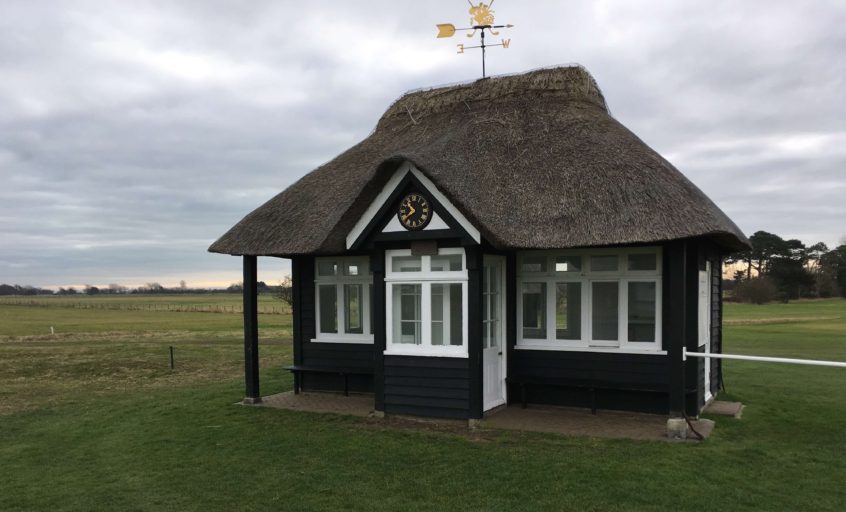
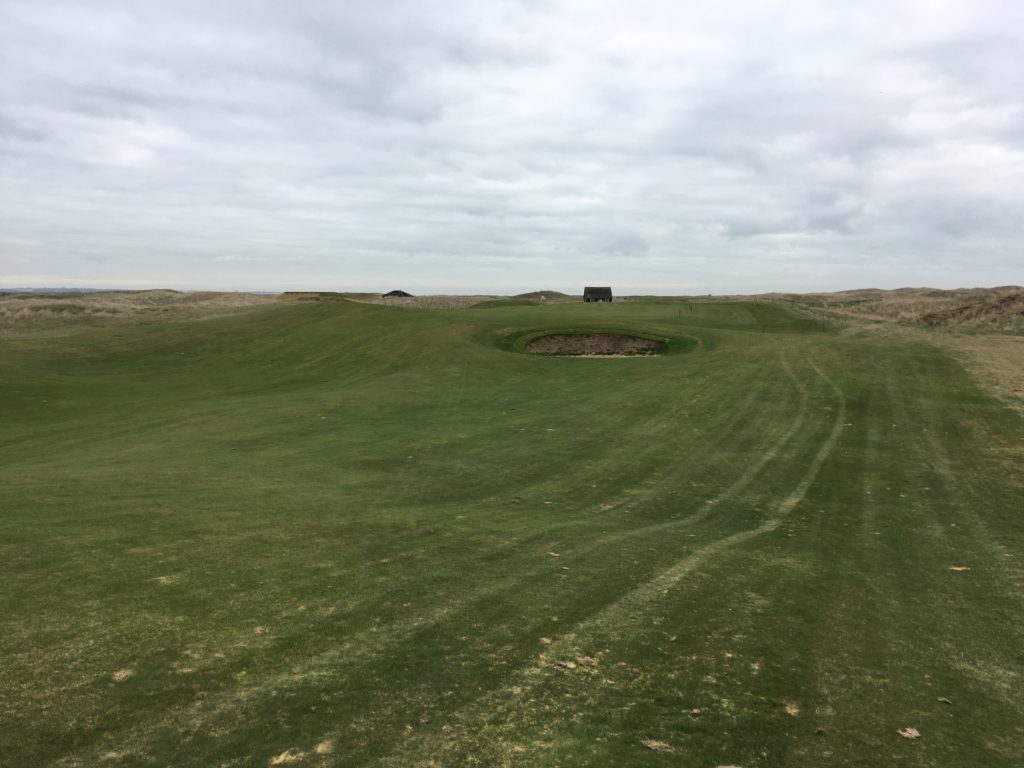


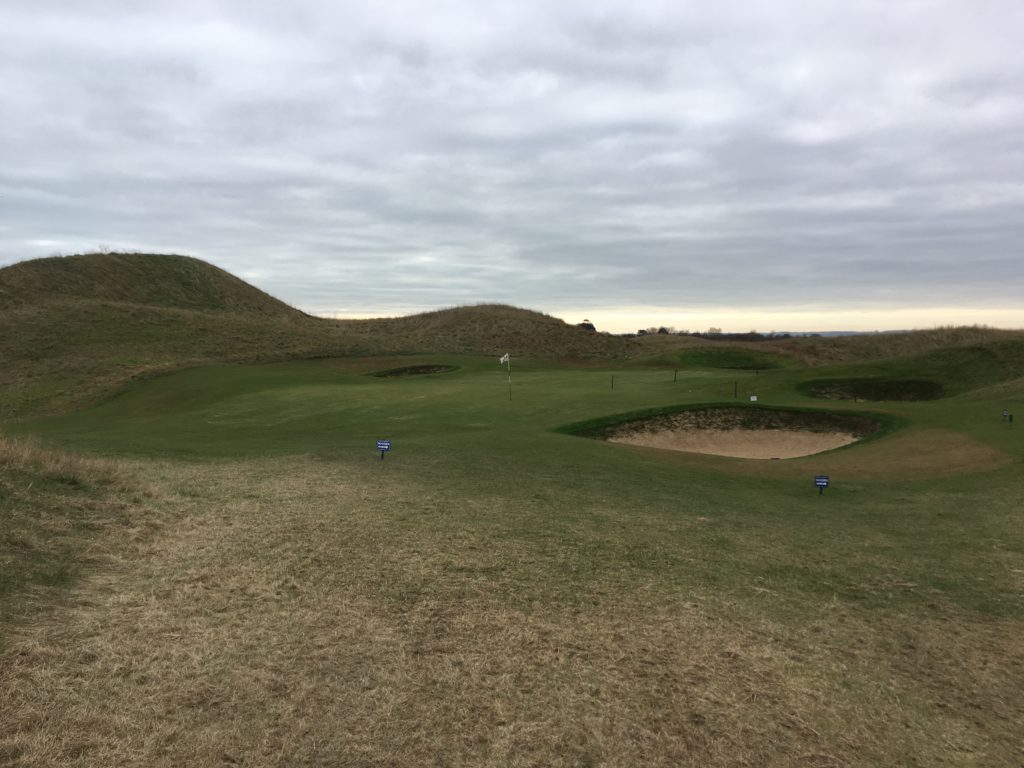
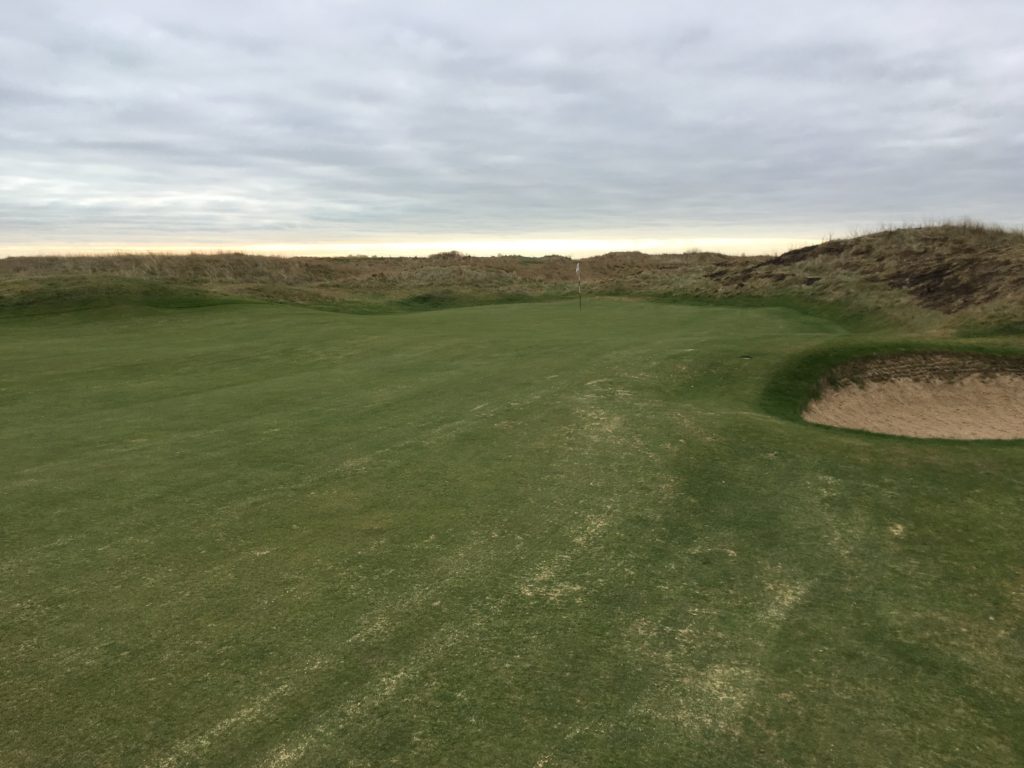


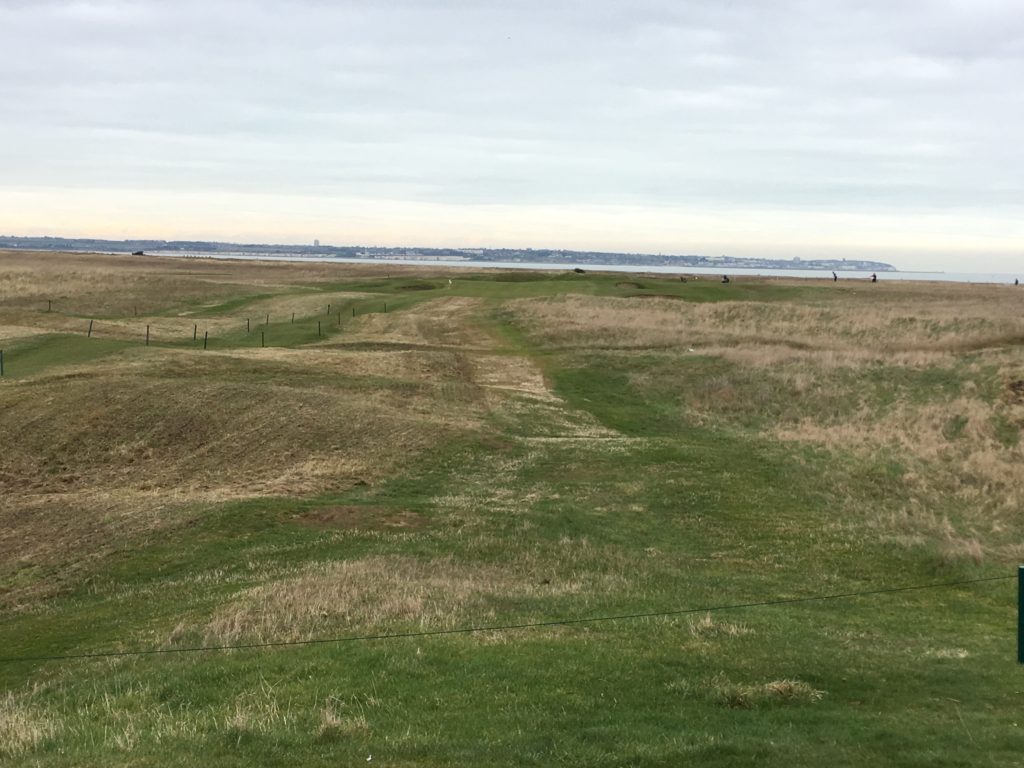
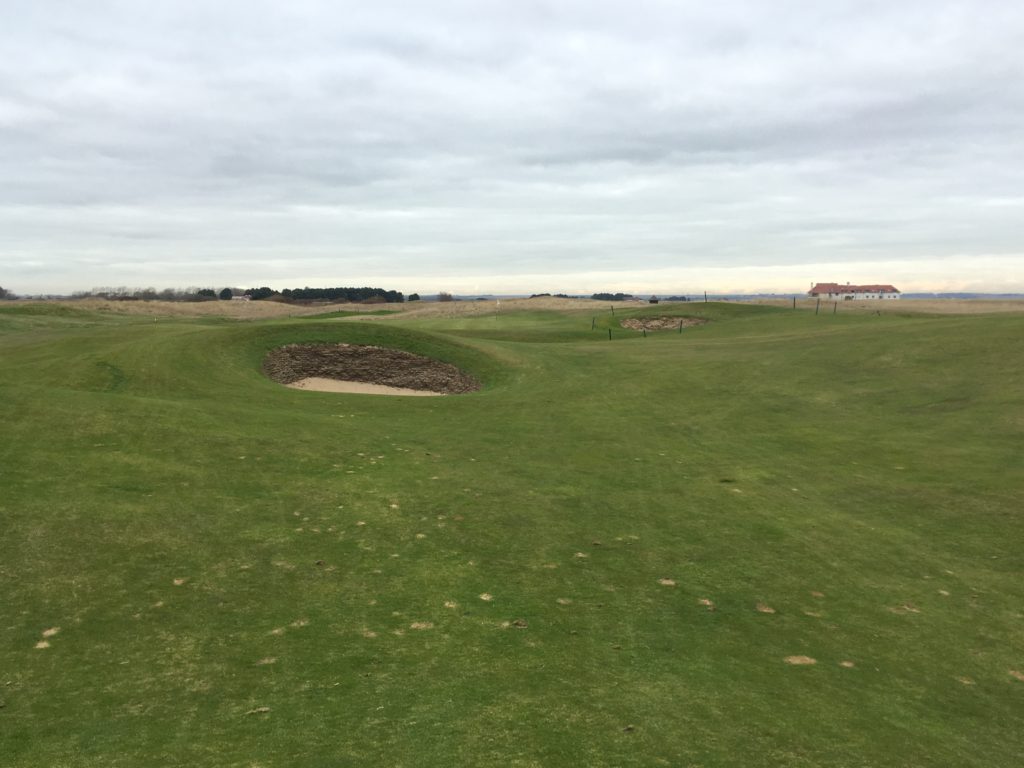
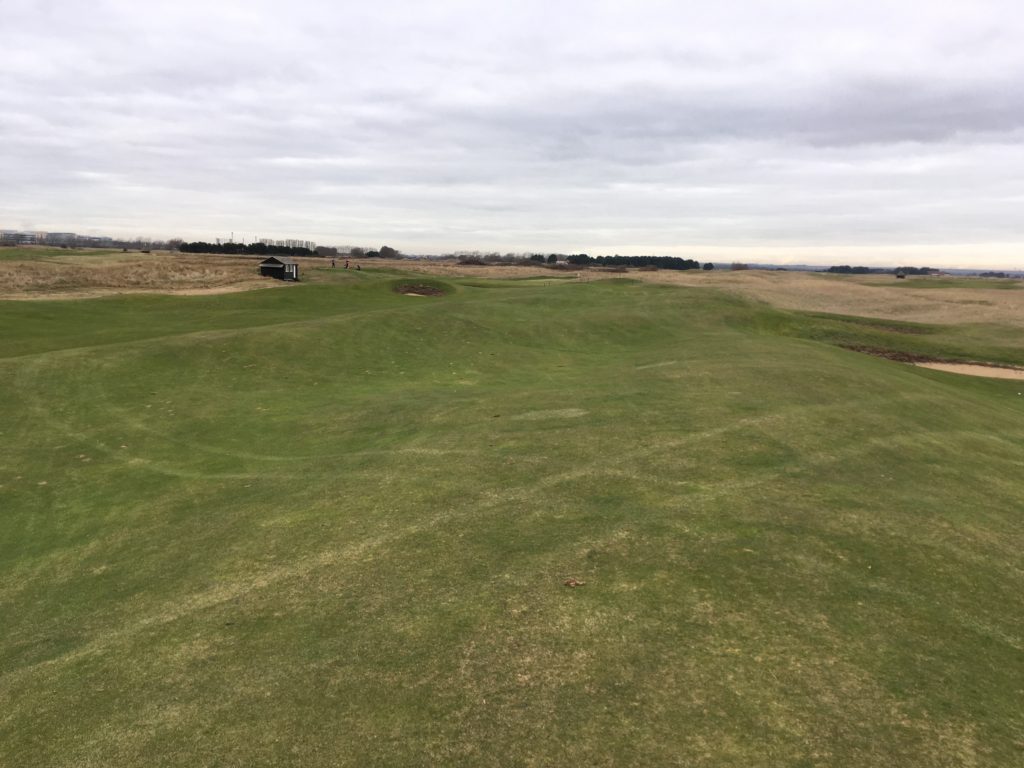
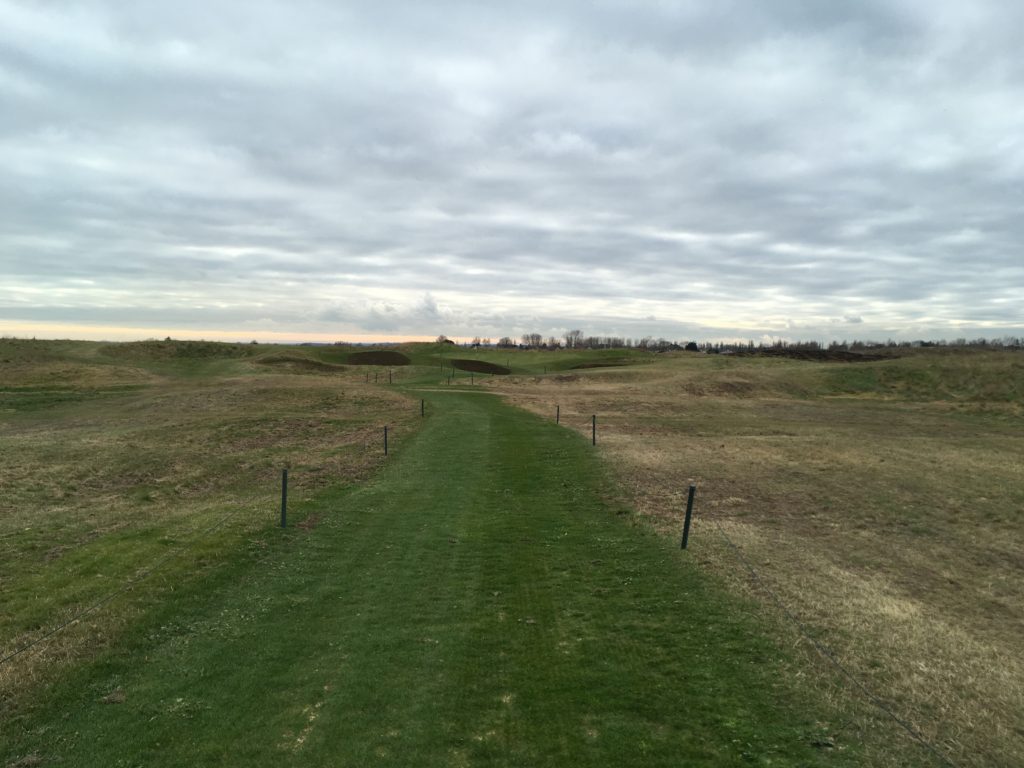

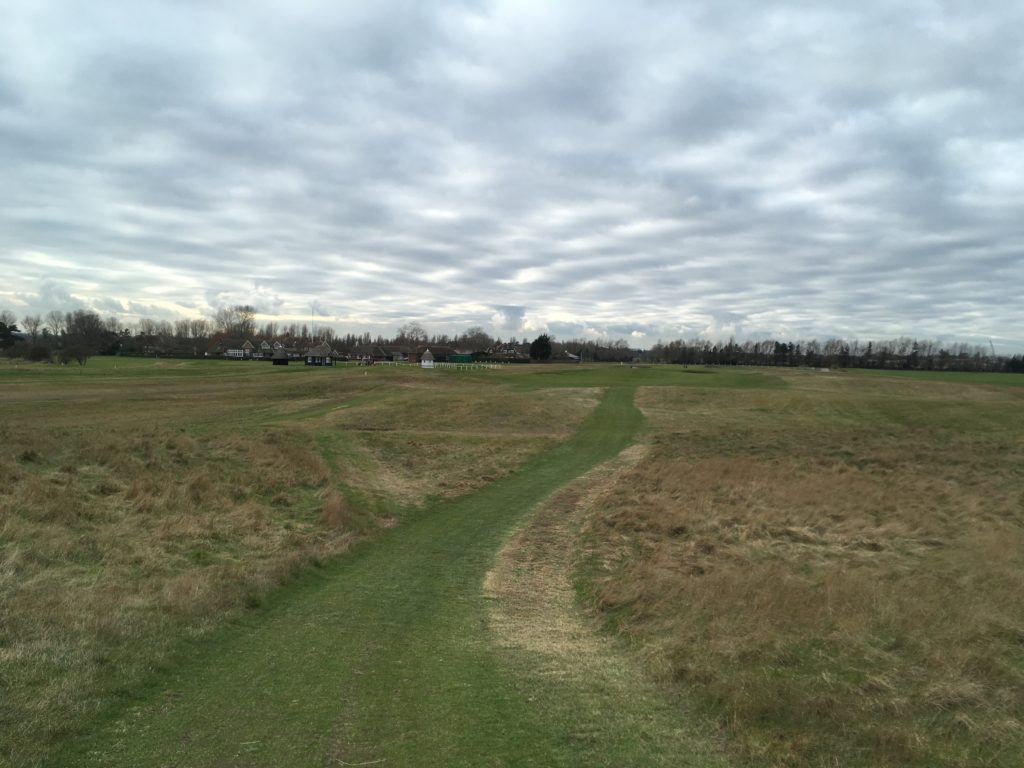
One Comment on “Royal St. George’s Review (By Tim Gallant)”
So true, enjoyed your article as much as the course thank you
Can’t wait for my next visit to Sandwich!